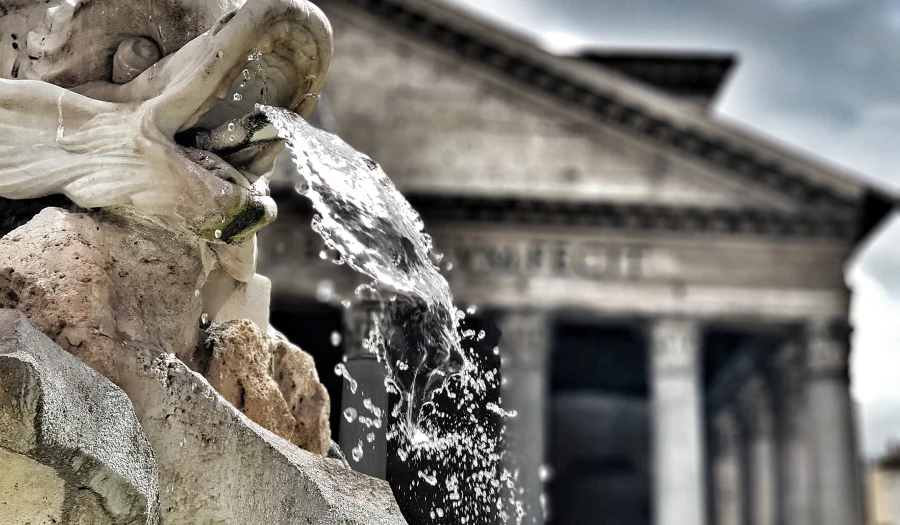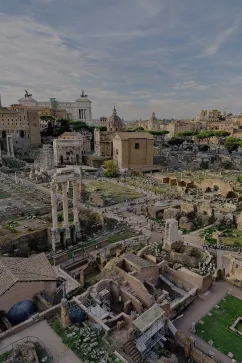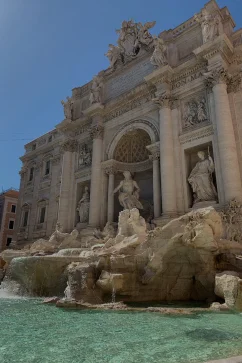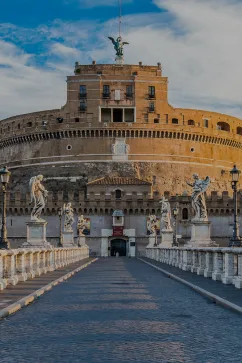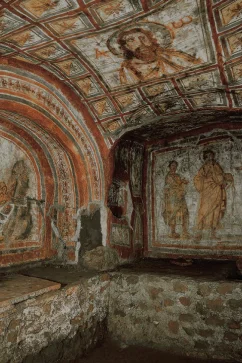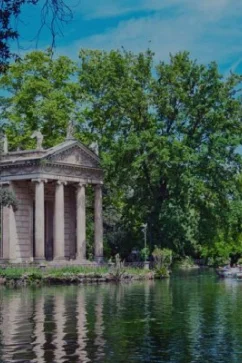Pantheon Rome
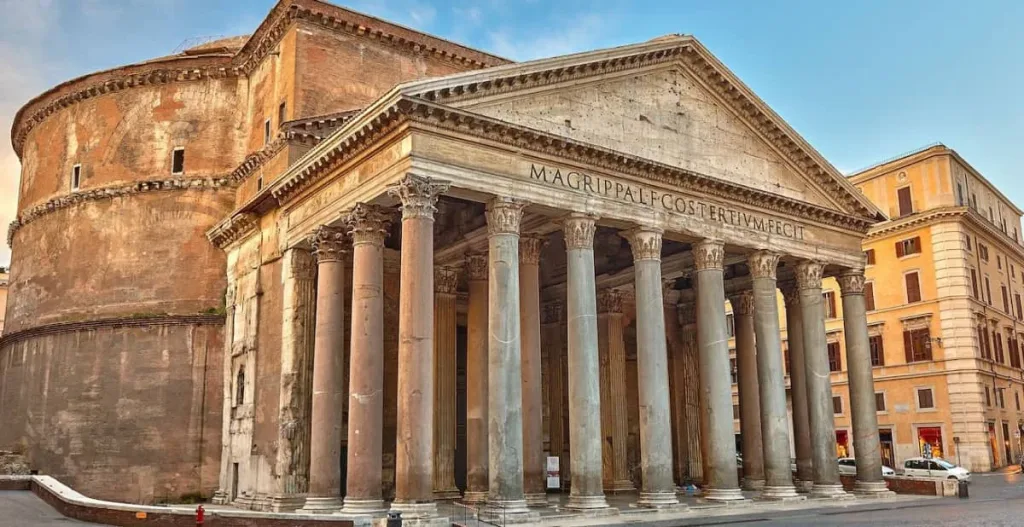
About the Pantheon
The Pantheon in Rome Italy is a historical building depicting the true marvel of ancient architecture and history. Often referred to as the Pantheon Italy, this iconic structure has withstood the test of time for over two millennia. It stands as a testament to Roman engineering and innovation. Its iconic dome, an architectural marvel of its time, still baffles experts with its precise construction. Remarkably, the Pantheon’s dome remains the world’s largest unreinforced concrete dome.
Originally built as a temple dedicated to the Roman gods, the Pantheon was later converted into a Christian church, preserving its historical and religious significance. Visitors today can explore its grandeur and witness the stunning art inside the Pantheon and the intricate details within its walls. The Pantheon Rome’s architecture and the art it houses make it a must-visit attraction. Its interior is adorned with magnificent sculptures and an awe-inspiring oculus, a circular opening in the dome that allows sunlight to illuminate the space.
Stepping inside the Pantheon is like stepping back in time, experiencing the genius of ancient Roman design and the enduring beauty of this remarkable historical building.
History of Pantheon Rome
The Pantheon Rome history is vast yet interesting as the design of this historical building is liked by many throughout history. It was originally commissioned by Marcus Agrippa, a Roman statesman and military general, in 27 BC. The original Pantheon was a temple dedicated to the gods of ancient Rome.
The current structure, known as the Pantheon of Hadrian, was built around 125 AD by Emperor Hadrian. It is believed to have been designed by the architect Apollodorus of Damascus. This new Pantheon was a grand temple, featuring the iconic dome that still stands today.
Over the centuries, the Pantheon underwent various transformations. In the early 7th century, it was converted into a Christian church, which helped preserve the building from the neglect and destruction that befell many ancient Roman structures. This Christian conversion likely contributed to the Pantheon’s survival.
Spanning an age of 2000 years, the Pantheon Rome has remained remarkably intact, and its dome remains one of the most impressive architectural achievements of ancient Rome. Today, the Pantheon is a popular tourist attraction and a symbol of Rome’s enduring architectural and historical significance.
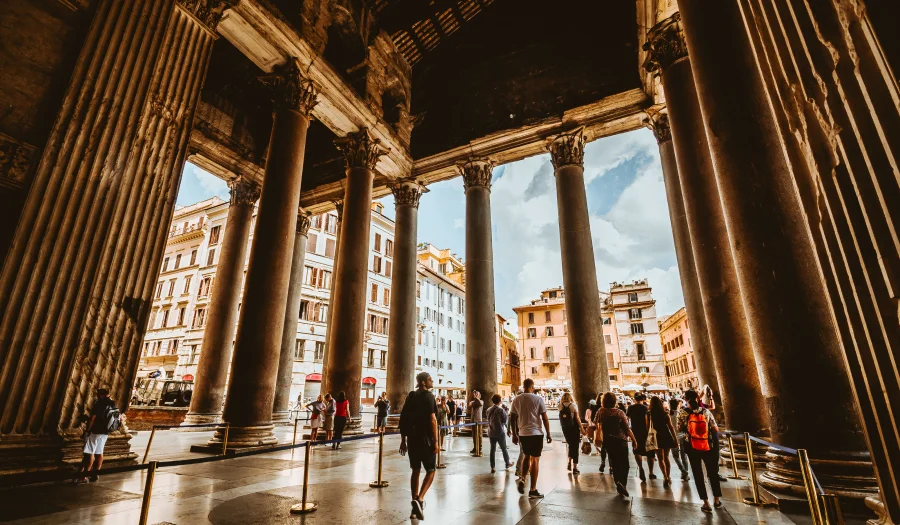
Tips for your visit
- Plan Your Visit: Research Pantheon Rome hours and tickets in advance. It’s usually free to enter, but guided tours offer deeper insights.
- Art and Architecture: Explore the interior to admire art inside the Pantheon, sculptures, and the famous oculus in the dome.
- Visit Off-Peak Panthenon Hours: To avoid crowds, go early in the morning or later in the evening.
- Respect the Site: Remember that the Pantheon is a sacred place. Maintain a respectful demeanor during your visit inside the Pantheon.
- Weather Preparation: Be prepared for sudden rain as the oculus is open. Check the forecast and bring an umbrella.
- Pantheon Location: The Pantheon is centrally located in Rome, making it easy to combine with other attractions like Piazza Navona and Campo de Fiori.
- No Flash Photography: To protect ancient art, avoid using flash photography inside.
- Mind Your Belongings: Keep an eye on your belongings, as crowded tourist areas can attract pickpockets.
- Historical Significance: Take a moment to appreciate the Pantheon’s historical and architectural significance.
- Local Insights: Consider joining a guided tour to gain deeper insights into the Pantheon’s history and architecture.
Tickets
When visiting the Pantheon in Rome, you’ll be delighted to know that entry is typically free, allowing you to explore its grandeur and marvel at its iconic dome and art inside. There are no specific Pantheon Rome tickets required for basic admission. However, for a more enriching experience, consider booking an audio guide for just €10 or a guided tour inside the Pantheon for €25. Be sure to make reservations beforehand. Make the most of your trip to Rome and immerse yourself in the Pantheon’s timeless beauty.
How to arrive
The Pantheon location is easy and you can reach there by many modes of transportation.
By Metro: The nearest metro station to the Pantheon is “Spagna” on Line A (the red line). From there, it’s about a 15-minute walk.
By Bus: You can take the bus to Piazza di Pietra, which is a short walk from the Pantheon. Buses 30, 40, 62, 64, and 81 serve this area.
Walking: If you’re staying in Rome’s historic center, walking is the best way to reach the Pantheon. It’s within walking distance of many other famous landmarks.
By Taxi: Taxis are readily available in Rome. You can simply ask your taxi driver to take you to the Pantheon.
